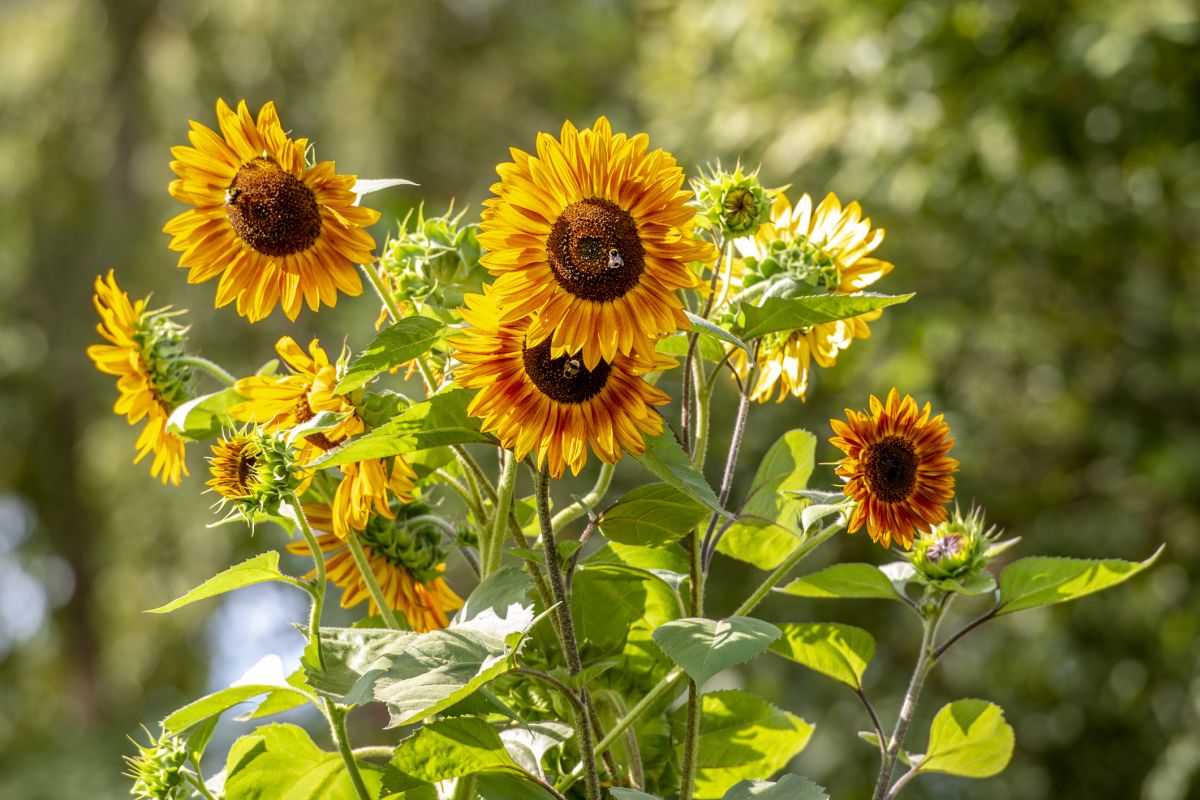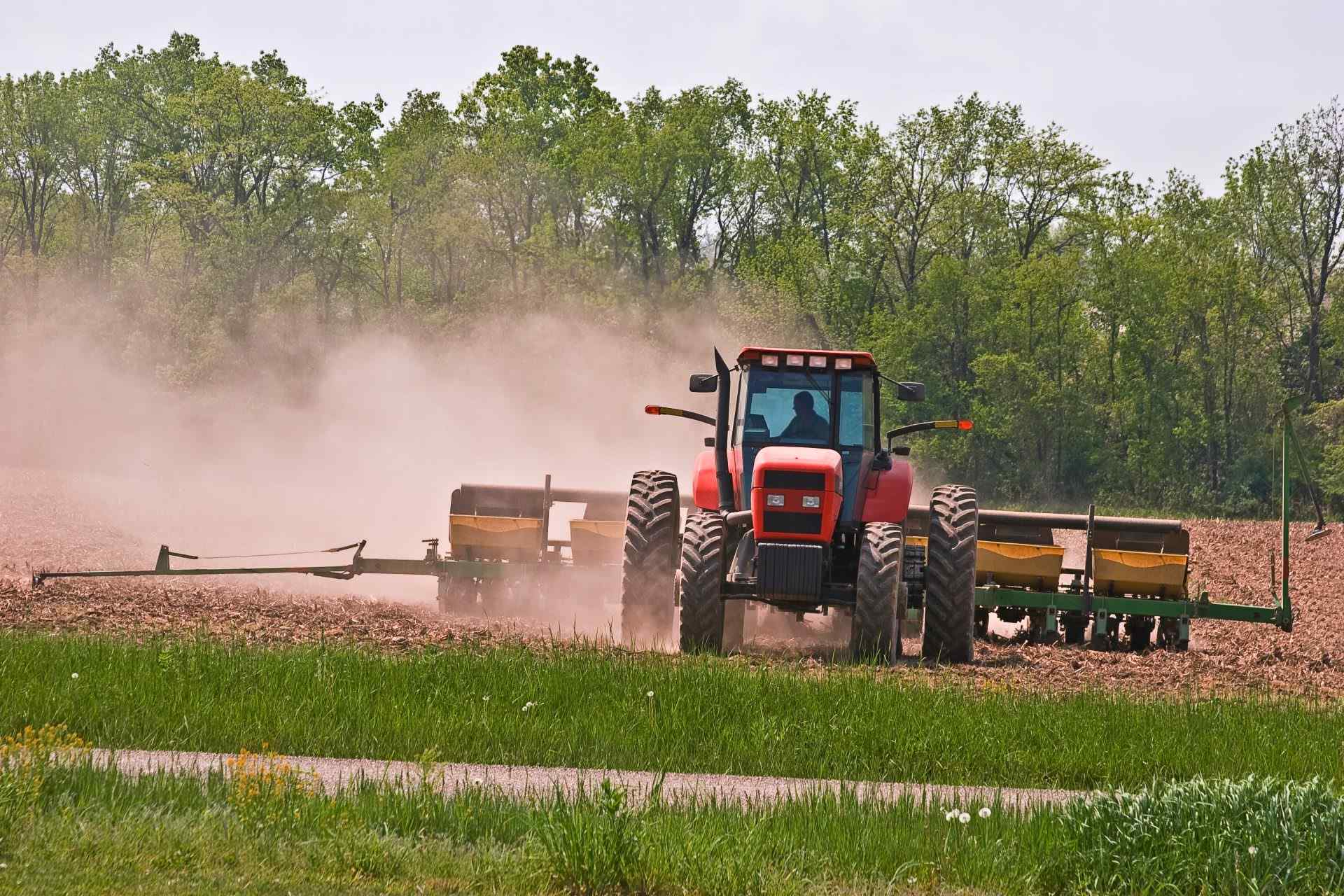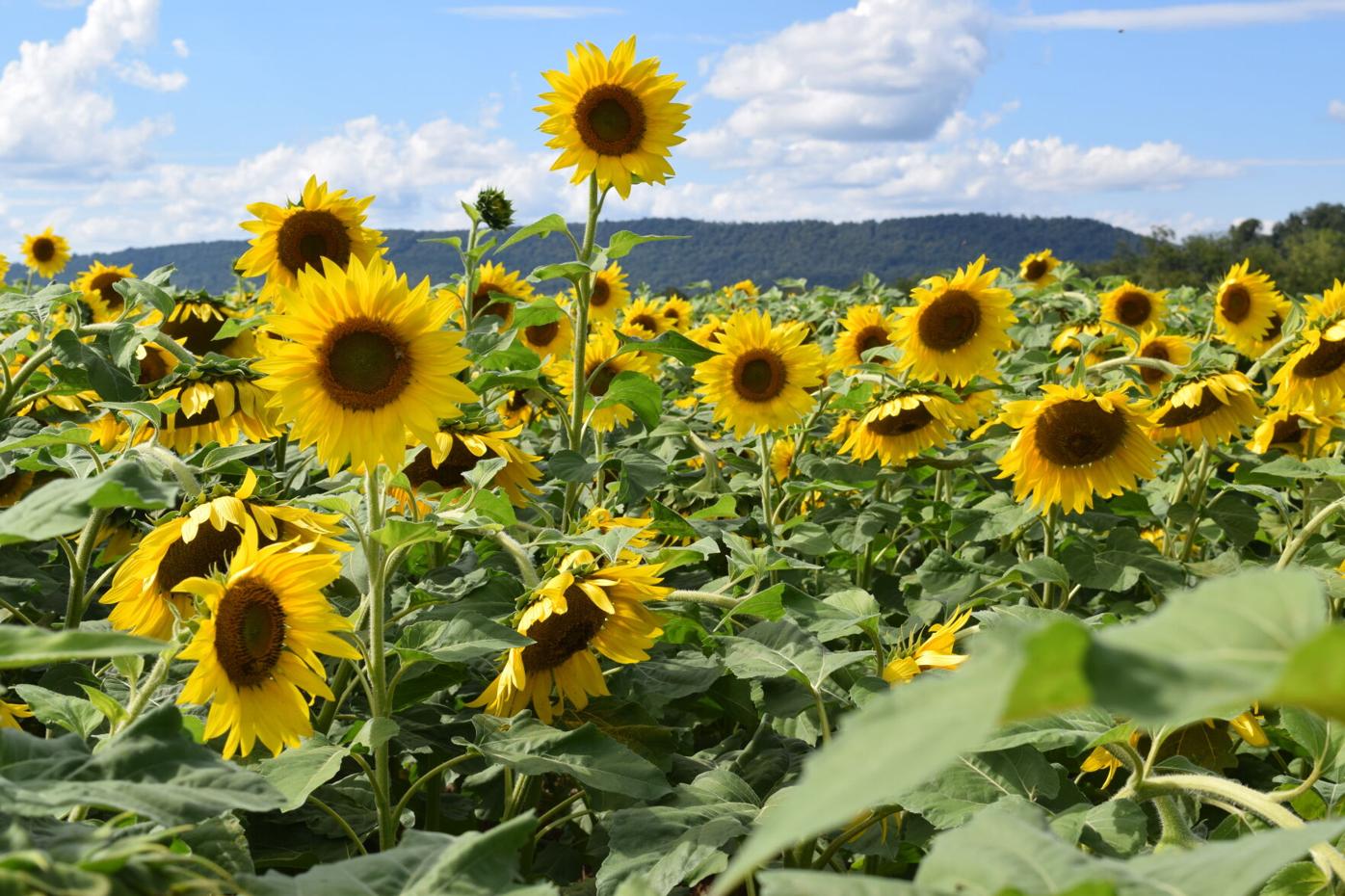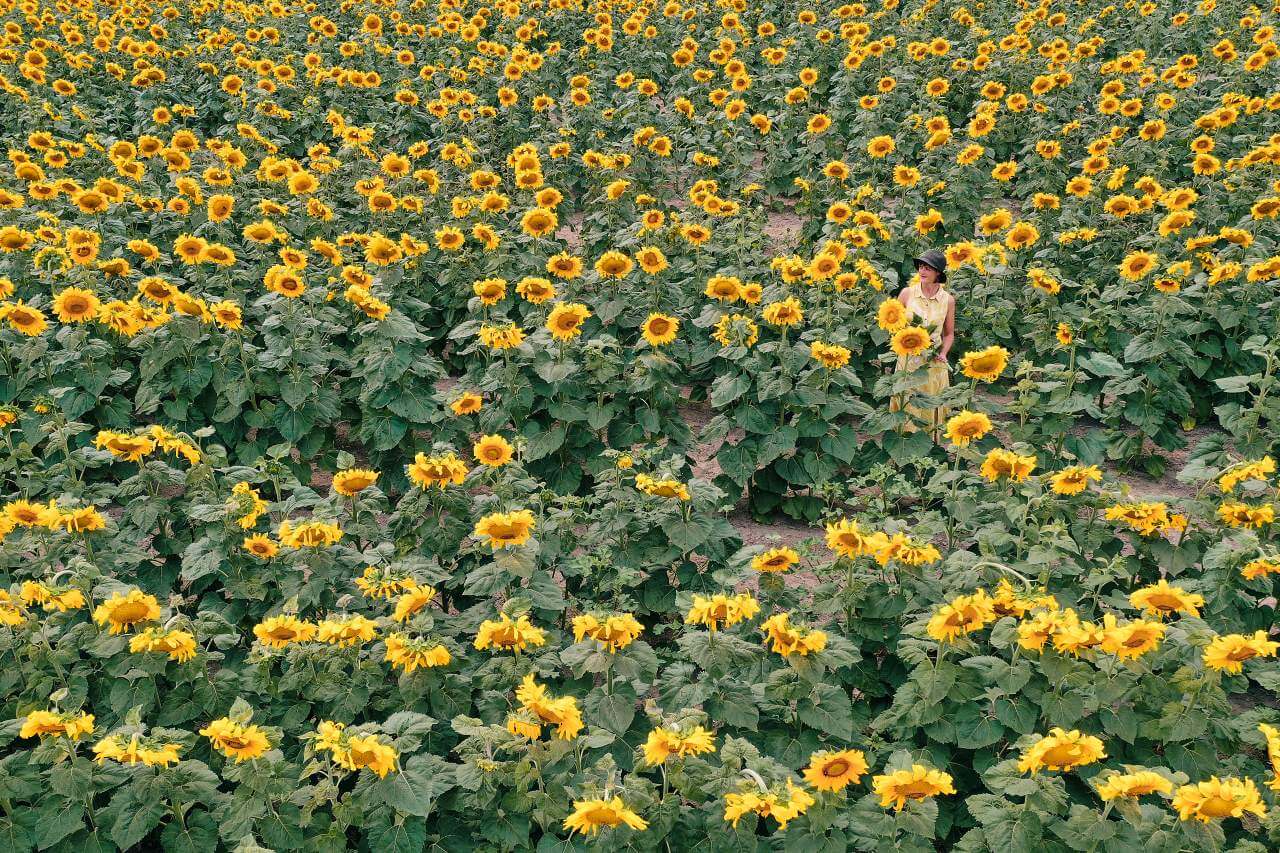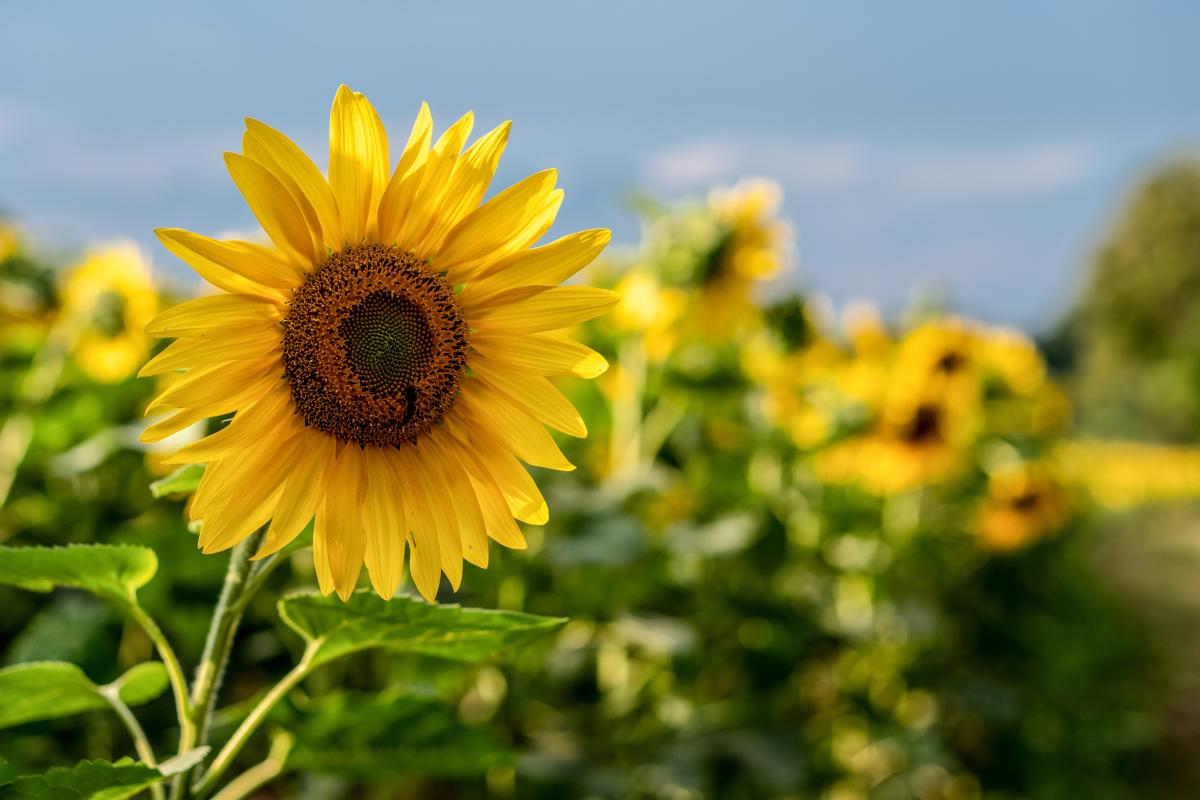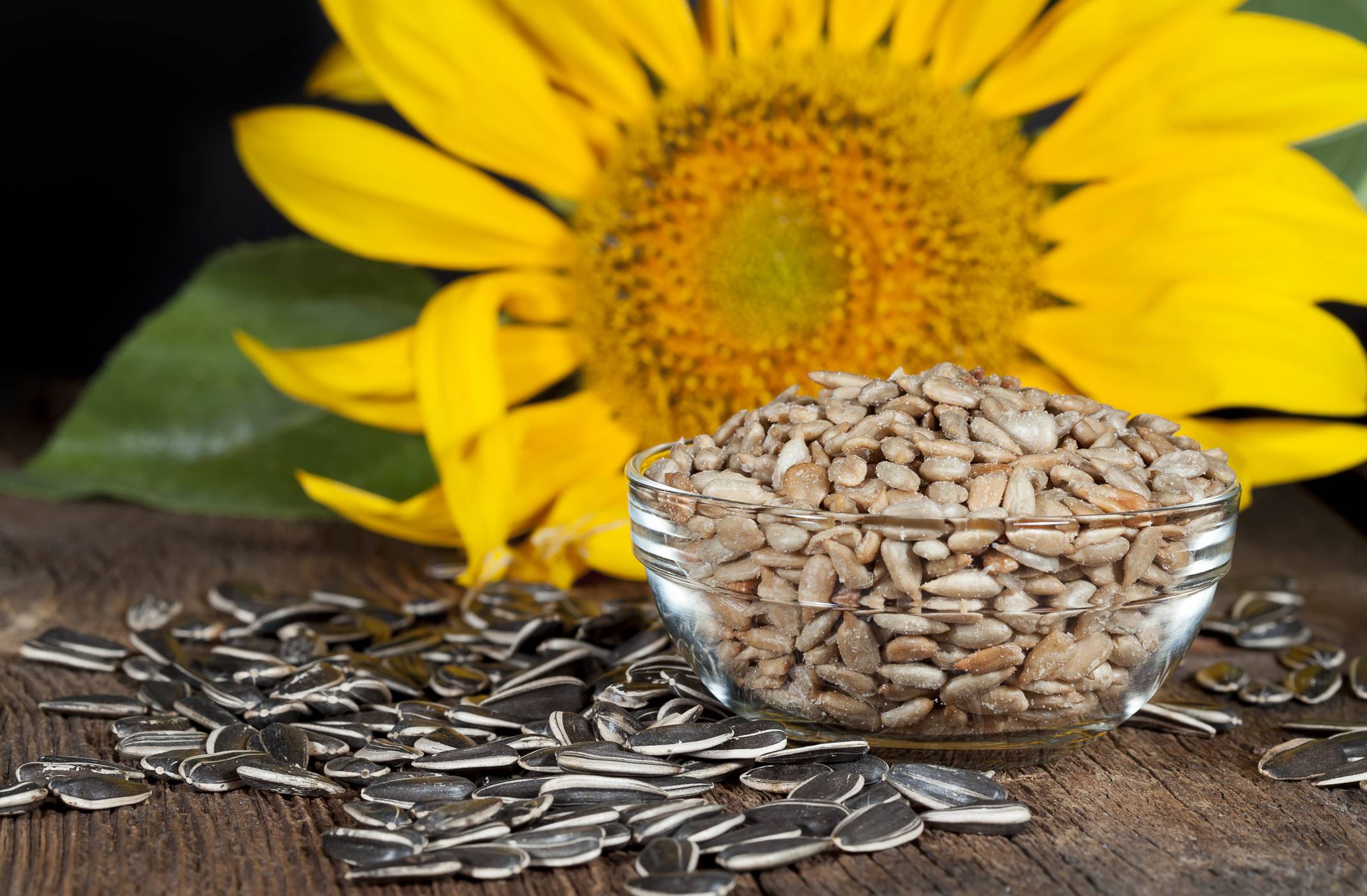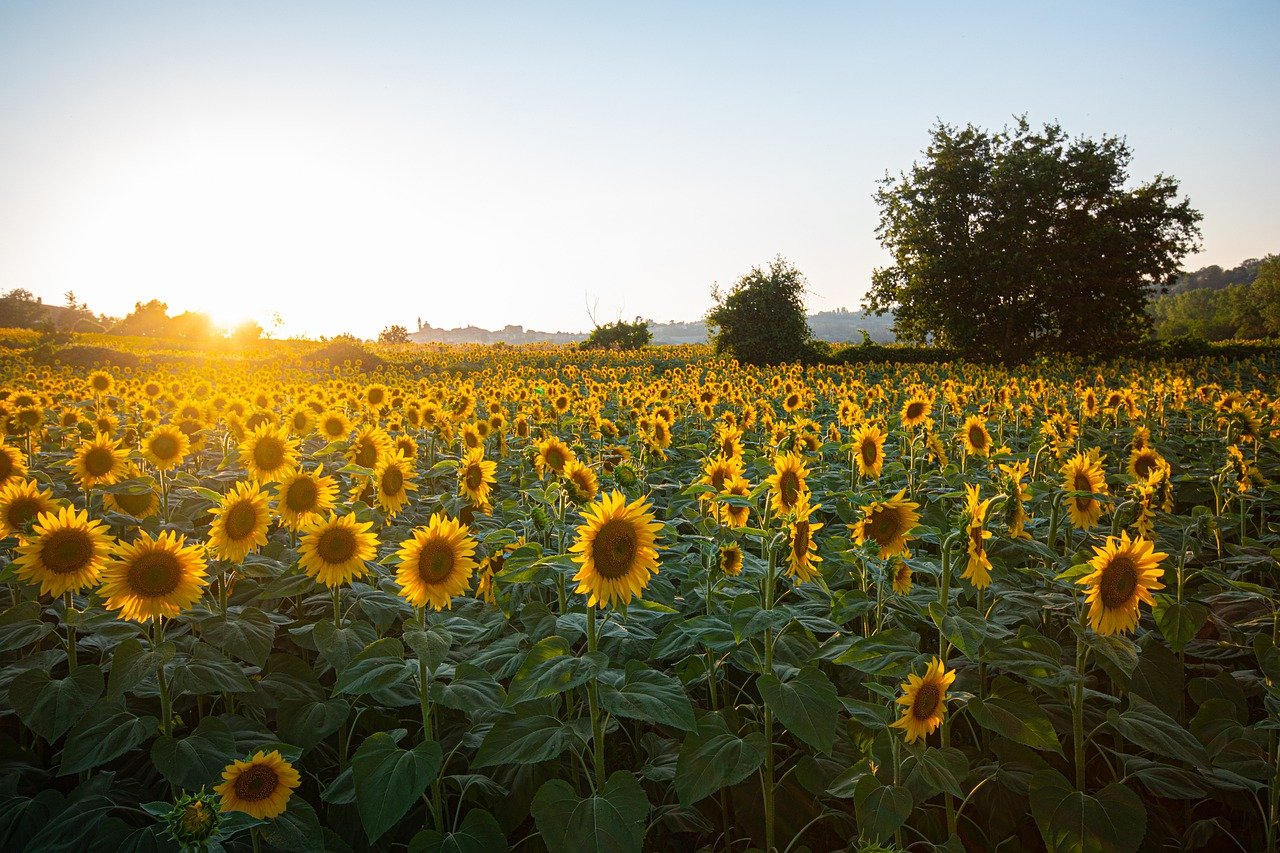Home>Types of Gardening>Ornamental Gardening>When To Plant Sunflowers Indiana


Ornamental Gardening
When To Plant Sunflowers Indiana
Modified: January 22, 2024
Learn the best time to plant ornamental sunflowers in Indiana for a vibrant and beautiful garden. Enhance your ornamental gardening with these expert tips.
(Many of the links in this article redirect to a specific reviewed product. Your purchase of these products through affiliate links helps to generate commission for Chicagolandgardening.com, at no extra cost. Learn more)
Table of Contents
Introduction
Welcome to the world of ornamental gardening, where beauty and nature blend together to create stunning landscapes. If you have a passion for gardening and want to add a touch of elegance to your outdoor space, ornamental gardening is the perfect choice for you. In this article, we will explore the art of ornamental gardening, diving into the captivating world of sunflowers and their cultivation in Indiana.
Indiana, known for its diverse climate and rich soil, provides an excellent environment for growing a variety of plants. With its warm summers and mild winters, this state offers optimal conditions for sunflower cultivation. Sunflowers, with their vibrant colors and towering stems, are a popular choice among gardeners, as they add a cheerful ambiance to any garden or landscape.
Whether you’re an experienced gardener or just starting out, understanding the climate and growing season in Indiana is crucial for successful ornamental gardening. By tailoring your gardening practices to suit the specific needs of sunflowers, you can ensure a bountiful harvest and beautiful blooms that will mesmerize anyone who sets eyes on them.
In this article, we will guide you through the process of growing sunflowers in Indiana. We will discuss the ideal varieties to plant, offer advice on soil preparation, and provide tips on planting, watering, fertilizing, and managing pests and diseases. By following these guidelines, you can create a flourishing sunflower garden that will be the envy of your neighborhood.
So, grab your gardening tools and let’s embark on a journey filled with beauty, nature, and the joy of ornamental gardening. Get ready to plant some sunflowers and watch them bloom into vibrant bursts of color that will brighten up your Indiana garden.
Climate and Growing Season in Indiana
Before diving into sunflower cultivation, it’s important to understand the climate and growing season in Indiana. The state experiences a temperate climate with distinct seasons, including warm summers and cool winters.
During the summer months of June, July, and August, Indiana experiences an average temperature range of 70°F to 85°F (21°C to 29°C). This warm weather provides optimal conditions for sunflowers to thrive. The long daylight hours during this time also benefit sunflowers, as they require ample sunlight for proper growth and flower development.
In contrast, Indiana’s winters can be cold, with average temperatures ranging from 25°F to 40°F (-4°C to 4°C). While sunflowers are not tolerant of frost, their seeds can withstand cooler temperatures and even benefit from a period of cold stratification, which enhances germination rates.
The growing season in Indiana typically begins in late spring, around April or May, and extends until early fall, around September or October. This generous growing window allows for a successful cultivation of sunflowers, as they require a longer growing period to reach their full potential.
It’s important to note that while Indiana’s climate is generally favorable for growing sunflowers, specific regions within the state may have slight variations in temperature, rainfall, and growing conditions. Therefore, it’s recommended to consult local agricultural extension offices or experienced gardeners in your area for more precise information.
Now that we have a good understanding of the climate and growing season in Indiana, let’s explore the sunflower varieties that are well-suited for this region.
Sunflower Varieties for Indiana
When it comes to selecting sunflower varieties for your Indiana garden, there are several options to consider. Choosing the right varieties can ensure successful cultivation and a stunning display of sunflowers in your landscape. Here are some varieties that are well-suited for Indiana’s climate:
1. Teddy Bear Sunflower (Helianthus annuus ‘Teddy Bear’): This dwarf sunflower variety grows to a height of about 2 feet and produces charming, fluffy, fully double, golden-yellow blooms. It is an excellent choice for small gardens or as a border plant.
2. Mammoth Sunflower (Helianthus annuus ‘Mammoth’): As the name suggests, this variety is known for its impressive size, reaching heights of 8 to 12 feet. It produces large, bright yellow flower heads that are perfect for attracting pollinators and creating a focal point in your garden.
3. Autumn Beauty Sunflower (Helianthus annuus ‘Autumn Beauty’): This variety stands out with its stunning multi-colored blooms, ranging from shades of vibrant red, orange, and yellow. The flowers also come in different sizes and shapes, adding uniqueness to your sunflower patch.
4. Italian White Sunflower (Helianthus annuus ‘Italian White’): If you’re looking for a sunflower variety that offers a soft, elegant touch to your garden, the Italian White Sunflower is an excellent choice. It features creamy-white blooms with dark centers and can reach heights of 5 to 7 feet.
5. Lemon Queen Sunflower (Helianthus annuus ‘Lemon Queen’): This variety boasts stunning lemon-yellow blooms that brighten up any garden. Lemon Queen sunflowers grow to a height of about 6 feet and produce abundant flowers with a delightful citrus scent.
These are just a few examples of sunflower varieties that thrive in Indiana. Depending on your personal preference and garden space, you can explore additional options such as sunflowers with branching stems or unique color variations. Remember to consider the height, color, and growth habit of the variety to ensure it aligns with your gardening goals.
Now that we’ve discussed sunflower varieties suitable for Indiana, let’s move on to the next important step in sunflower cultivation: soil preparation.
Soil Preparation
Proper soil preparation is essential for the successful growth of sunflowers in Indiana. Sunflowers thrive in well-draining soil that is rich in organic matter. Here are some steps to follow when preparing your soil:
1. Test the Soil: Before planting sunflowers, it’s a good idea to test your soil’s pH and nutrient levels. You can obtain a soil testing kit from your local extension office or utilize online soil testing services. This will help you determine if any amendments are needed to optimize the soil for sunflower growth.
2. Clear the Area: Remove any weeds, rocks, or debris from the planting area. Sunflowers require ample space and sunlight, so ensure there are no obstructions that may hinder their growth.
3. Work the Soil: Use a garden fork or tiller to loosen the soil to a depth of about 12 to 15 inches. This will provide space for the sunflower roots to establish and allow for proper water drainage.
4. Add Organic Matter: Incorporate well-rotted organic matter, such as compost or aged manure, into the soil. This will improve soil fertility, enhance drainage, and promote healthy root growth. Aim for a ratio of 1 part organic matter to 3 parts soil.
5. Adjust the pH: If your soil pH test indicates that it is too acidic or alkaline, you may need to adjust it. Sunflowers prefer a slightly acidic to neutral pH range between 6.0 and 7.5. To raise the pH, add lime, and to lower it, you can use sulfur or peat moss.
6. Rake the Soil: After incorporating organic matter and adjusting the pH, use a garden rake to level the soil surface and break up any large clumps. This will create a smooth and even planting bed for your sunflower seeds.
By following these soil preparation steps, you are creating a healthy and nutrient-rich environment for your sunflowers to thrive. Now that the soil is ready, let’s move on to the next step: planting the sunflower seeds.
Planting Sunflowers in Indiana
Planting sunflowers in Indiana is an exciting and rewarding process. Here are some guidelines to follow to ensure successful seed germination and establishment:
1. Choose the Right Time: Sunflowers are warm-season plants that thrive in temperatures above 50°F (10°C). Wait until the danger of frost has passed and the soil has warmed up, typically around late spring or early summer, to plant your sunflower seeds in Indiana.
2. Select a Sunny Location: Sunflowers require full sun to flourish, so choose a planting location that receives at least 6 to 8 hours of direct sunlight daily. This will promote healthy growth and vibrant blooms.
3. Spacing: Consider the mature size of the sunflower variety you’re planting when determining the spacing between seeds or seedlings. Generally, larger varieties require 18 to 24 inches (45 to 60 centimeters) between plants, while smaller varieties can be spaced closer, around 12 to 18 inches (30 to 45 centimeters) apart.
4. Planting Depth: Plant your sunflower seeds at a depth of 1 to 1.5 inches (2.5 to 3.8 centimeters) in the soil. If you’re planting smaller varieties, adjust the planting depth accordingly – around 0.5 to 1 inch (1.3 to 2.5 centimeters).
5. Watering: After planting the seeds, water the soil gently but thoroughly. Ensure the soil is evenly moist, but not waterlogged. Avoid overwatering, as it can lead to rotting of the seeds or seedlings.
6. Mulching: Consider applying a layer of organic mulch, such as straw or wood chips, around your sunflower plants. Mulching helps retain soil moisture, suppresses weed growth, and regulates soil temperature.
7. Supporting Tall Varieties: If you’re planting tall sunflower varieties, it’s a good idea to provide support to prevent them from toppling over due to strong winds or heavy flower heads. Insert stakes or install a trellis system near the plants to provide additional support as they grow.
8. Regular Maintenance: Monitor the soil moisture levels throughout the growing season and water as needed. Regularly weed the area around the sunflower plants to minimize competition for nutrients and water. Also, keep an eye out for pests and diseases and take appropriate measures to manage them.
By following these planting guidelines, you can ensure a successful start to your sunflower garden in Indiana. With proper care and maintenance, you’ll soon be rewarded with the sight of tall, vibrant sunflowers in full bloom. Next, let’s explore the importance of watering and fertilizing sunflowers.
Watering and Fertilizing Sunflowers
Proper watering and fertilizing are key factors in the healthy growth and development of sunflowers. By following these guidelines, you can ensure your sunflowers receive the necessary nutrients and moisture to thrive in Indiana’s climate:
Watering:
1. Maintain Moisture: Sunflowers require consistent soil moisture throughout their growing season. Water deeply and thoroughly, ensuring the soil is evenly moist but not waterlogged. Aim to provide around 1 inch (2.5 centimeters) of water per week during dry spells.
2. Monitor Soil Moisture: Regularly check the moisture level of the soil. Stick your finger about an inch into the soil near the base of the plant. If it feels dry at that depth, it’s time to water. Be mindful of high temperatures and windy conditions, which can cause the soil to dry out more quickly.
3. Timing: Water your sunflowers in the early morning or late afternoon. This allows the plants to absorb the water before the heat of the day, reducing the risk of evaporation and water stress.
4. Focus on the Root Zone: Direct your watering efforts to the base of the plants, focusing on the root zone. Avoid overhead watering, as it can lead to foliar diseases and inefficient water utilization.
Fertilizing:
1. Soil Test: Conduct a soil test before applying fertilizers. This will help determine the nutrient deficiencies and pH levels of your soil, guiding you in selecting the appropriate fertilizers.
2. Slow-Release Fertilizers: Sunflowers generally don’t require heavy fertilization, especially if the soil is already rich in organic matter. Consider using a balanced slow-release fertilizer with a N-P-K ratio (Nitrogen, Phosphorus, and Potassium) of 10-10-10 or similar. Follow the manufacturer’s instructions for application rates.
3. Timing: Apply fertilizers to the soil before planting or at the early stages of sunflower growth. This allows the nutrients to be readily available as the sunflowers develop.
4. Avoid Over-fertilization: It’s important not to over-fertilize sunflowers, as excessive nitrogen can lead to excessive foliage growth at the expense of flower production. Over-fertilization can also increase the risk of lodging, where the plant falls over due to weak stems.
5. Organic Alternatives: If you prefer organic fertilizers, options like compost, well-rotted manure, or other organic amendments can be beneficial. Work these into the soil before planting or apply them as a side dressing during the growing season.
Remember, every garden and soil is unique, so it’s essential to monitor your sunflowers’ growth and adjust watering and fertilizing practices accordingly. By providing adequate moisture and balanced nourishment, you’ll support robust, beautiful sunflowers in your Indiana garden. Next, let’s discuss pest and disease management for sunflowers.
Pest and Disease Management
Pests and diseases can pose challenges to sunflower growth and reduce the overall health and productivity of your plants. By implementing effective pest and disease management strategies, you can protect your sunflowers in Indiana. Here are some common pests and diseases to watch out for, along with preventive and control measures:
Pests:
1. Aphids: These small, sap-sucking insects can cause stunted growth and distorted leaves. Control aphids by spraying a strong stream of water to dislodge them or using insecticidal soaps or neem oil as directed.
2. Cutworms: These caterpillars feed on young sunflower plants near the soil surface, cutting them off at the base. Protect seedlings by placing collars around the base of the plants or using biological control methods such as beneficial nematodes.
3. Sunflower Moth: This pest lays its eggs on the sunflower buds, and the larvae eat the developing seeds. Monitor for their presence and consider using pheromone traps or biological controls to manage their populations.
Diseases:
1. Powdery Mildew: This fungal disease causes a whitish, powdery coating on the leaves, leading to reduced photosynthesis and stunted growth. To manage powdery mildew, ensure good air circulation, space plants adequately, and apply fungicides if necessary.
2. Sclerotinia (White Mold): This disease is characterized by fluffy white growth on the stems and petal discoloration. Maintain good plant spacing, promote air circulation, and remove infected plant parts promptly to prevent the spread of sclerotinia.
3. Botrytis (Gray Mold): This fungus causes gray, fuzzy mold on sunflower petals, stems, and leaves. Remove infected plant parts and dispose of them properly. Ensure proper air circulation and practice good garden hygiene to prevent the spread of botrytis.
4. Verticillium Wilt: This soilborne fungal disease can cause yellowing, wilting, and death of sunflower plants. Plant resistant varieties and practice crop rotation to minimize the risk of verticillium wilt.
Prevention and Control:
– Regularly inspect your sunflowers for pest and disease symptoms.
– Practice proper garden hygiene by removing debris and plant residues.
– Monitor the moisture levels to avoid overwatering, as it can promote fungal disease development.
– Ensure adequate spacing between plants for good air circulation.
– Plant disease-resistant sunflower varieties when available.
– Use organic pest control methods, such as companion planting, beneficial insects, and natural repellents.
– If necessary, apply chemical controls as directed, taking care to follow safety precautions.
By implementing these pest and disease management practices, you can protect your sunflowers and ensure their health and vibrancy in your Indiana garden. Finally, let’s discuss the process of harvesting sunflowers.
Harvesting Sunflowers
The process of harvesting sunflowers is an exciting culmination of your efforts throughout the growing season. Harvesting at the right time ensures the highest quality seeds and allows you to enjoy the beauty of fully mature sunflower heads. Here are some steps to follow when harvesting sunflowers:
1. Monitoring Seed Maturity: Watch for signs of seed maturity as the sunflower heads develop. The back of the flower head will turn from green to yellow or brown, and the seeds inside will become plump and well-developed. Ensure that the majority of the seeds are mature before harvesting.
2. Timing: The ideal time to harvest sunflowers for seed production is when the back of the flower head turns brown and the seeds are fully developed, but not overly dry or starting to detach from the head. This typically occurs around late summer or early fall in Indiana.
3. Cutting the Sunflower Heads: Use sharp garden shears or a clean, serrated knife to cut the sunflower heads from the stem, leaving a few inches of stem attached to the head. Be careful not to damage the seeds when cutting.
4. Drying: Hang the sunflower heads upside down in a well-ventilated area, such as a garage or covered porch, to allow for proper drying. This process typically takes 1-2 weeks. Ensure that the heads are protected from direct sunlight and rain during the drying process.
5. Seed Extraction: Once the sunflower heads are fully dry, gently rub the heads or shake them over a clean cloth or bucket to release the seeds. You can also use your hands or a fork to loosen the seeds from the head. Avoid applying excess force, as it might damage the seeds.
6. Seed Cleaning: Remove any debris or remaining flower parts from the harvested seeds by winnowing or using a screen. Pour the seeds slowly back and forth between two containers or use a fan to blow away the lighter debris, allowing the clean seeds to fall into a separate container.
7. Storage: Store the cleaned sunflower seeds in a cool, dry place in airtight containers, such as glass jars or sealable bags. Label the containers with the sunflower variety and the harvest date for future reference.
8. Enjoying the Harvest: Harvested sunflower seeds can be enjoyed as a healthy snack, used for culinary purposes, or saved for sowing in the next season’s garden.
By following these steps, you can successfully harvest sunflowers and enjoy the fruits of your labor. Whether you use the seeds for snacking, baking, or decorating, the vibrant colors and nutritious goodness of sunflower seeds will bring joy and satisfaction to your Indiana garden. Congratulations on a successful sunflower harvest!
Conclusion
Cultivating sunflowers in your Indiana garden is a delightful and rewarding endeavor. From understanding the climate and growing season in Indiana to selecting the right sunflower varieties, preparing the soil, and practicing proper watering and fertilizing techniques, each step contributes to the success of your sunflower garden.
By being attentive to pest and disease management, you can protect your sunflowers from potential threats and ensure their health and vigor. When the time comes to harvest, make sure to observe the signs of seed maturity and follow the proper harvesting and seed extraction techniques to enjoy the fruits of your labor.
Sunflowers bring a touch of beauty and elegance to any garden landscape. Their vibrant colors, striking forms, and nutritious seeds offer a feast for the eyes and nourishment for birds and wildlife. They create a welcoming habitat for pollinators and serve as a source of inspiration and joy for garden enthusiasts.
So, as you embark on this ornamental gardening adventure, let your creativity bloom alongside the sunflowers. Experiment with different varieties, colors, and arrangements to create a visually stunning and inviting space for yourself and others to enjoy.
Remember, gardening is not just about the end result but also the journey itself. Embrace the moments of sowing, tending, and nurturing your sunflowers. Take pleasure in the beauty that unfolds before your eyes as they grow and mature. Share your experiences and knowledge with fellow gardeners, building a community of nature lovers united by their passion for ornamental gardening and the marvels of sunflowers.
So, dust off your gardening tools, roll up your sleeves, and let the sunflowers brighten up your Indiana garden. Get ready to immerse yourself in the beauty, grace, and wonder of these magnificent flowers. Happy gardening!

